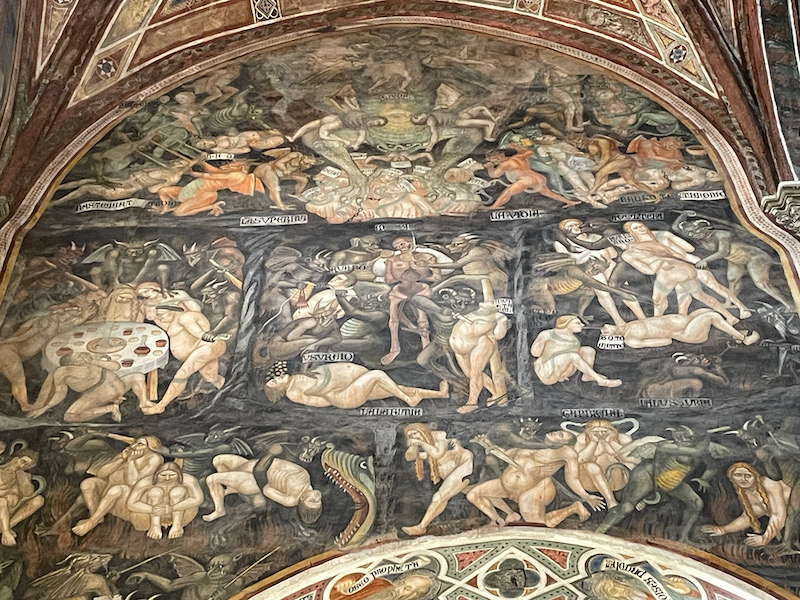Our Blog - Tuscany 2024 Trip - San Gimignano, Italy
You will see a few small walled medieval hill towns during this trip, this one being San Gimignano. It is kown for its medieval architecture, with a dozen of its tower houses preserved. There is also a local white wine, Vernaccia di San Gimignano, that is produced from the ancient variety of Vernaccia grape which is grown on the sandstone hillsides of the area.
As with some other towns in this area, it dates back to an Etruscan village in the 3rd century BC. In the 1st century, two brothers fled Rome for this area and built two castles, Mucchio and Silvia. The name of Silvia was changed to San Gimignano in 450 AD after Bishop Geminianus, the Saint of Modena, intervened to spare the castle from destruction by the followers of Attila the Hun. As a result, a church was dedicated to the saint, and in the 6th and 7th centuries a walled village grew up around it.
We entered through Porta San Giovanni, which was the most important gate in the walls of the city. Completed in 1252, it was the historic access for those coming from Siena. The lower arch is in Sienese style, topped by a guardhouse with corbels and trefoil hanging arches. You can also see a huge round tower, that was just to the left of the gate and the wall between.
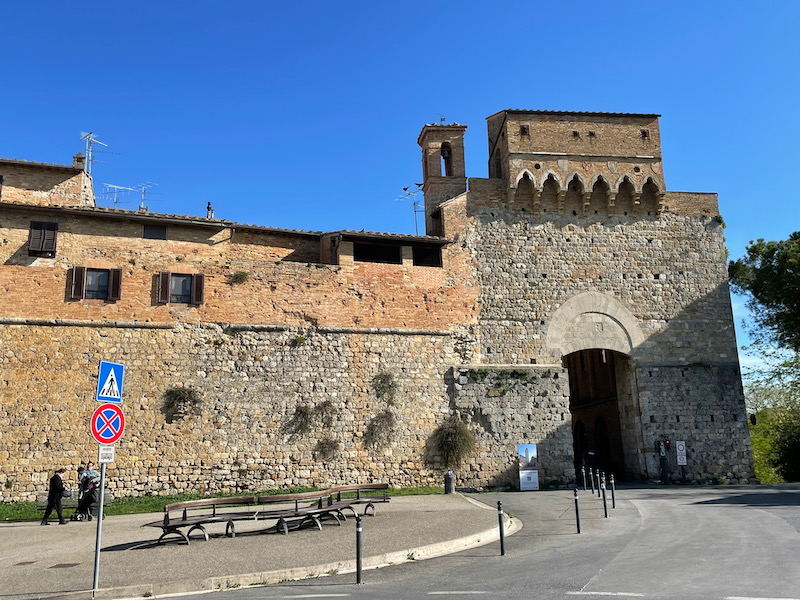
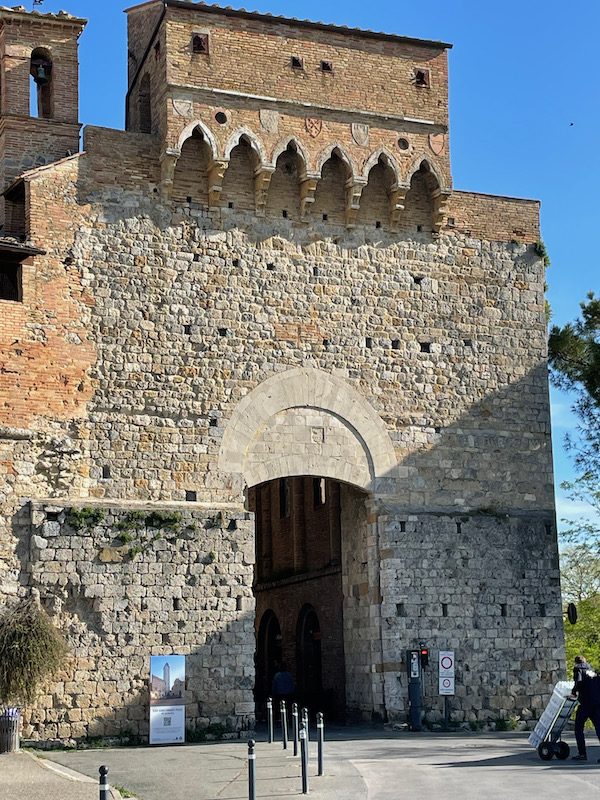
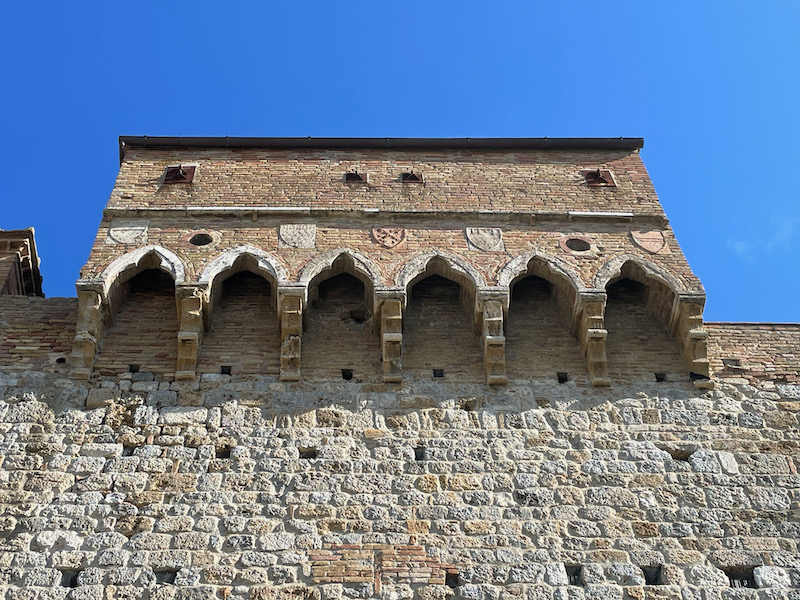
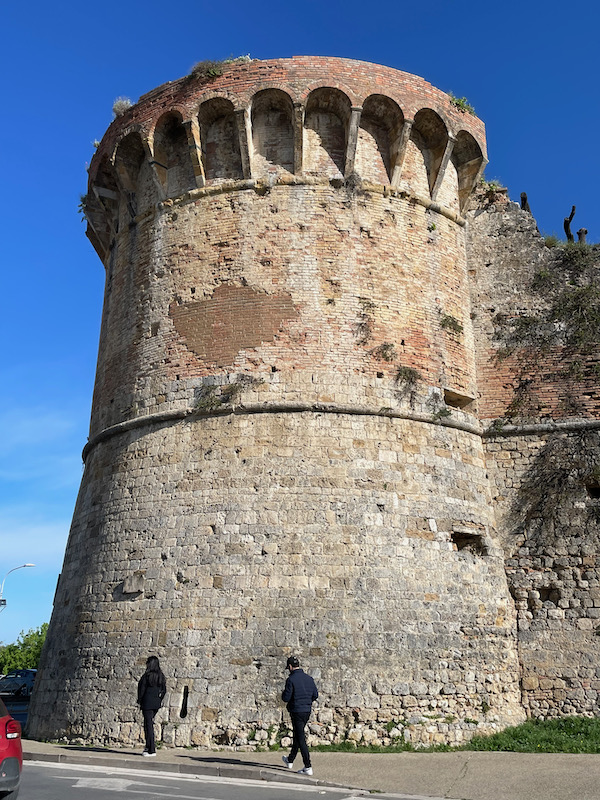
It is mostly pedestrian inside the walls, which is close to a necessity with how narrow the streets are. I have a few general pictures to give an idea of the buildings and architecture.
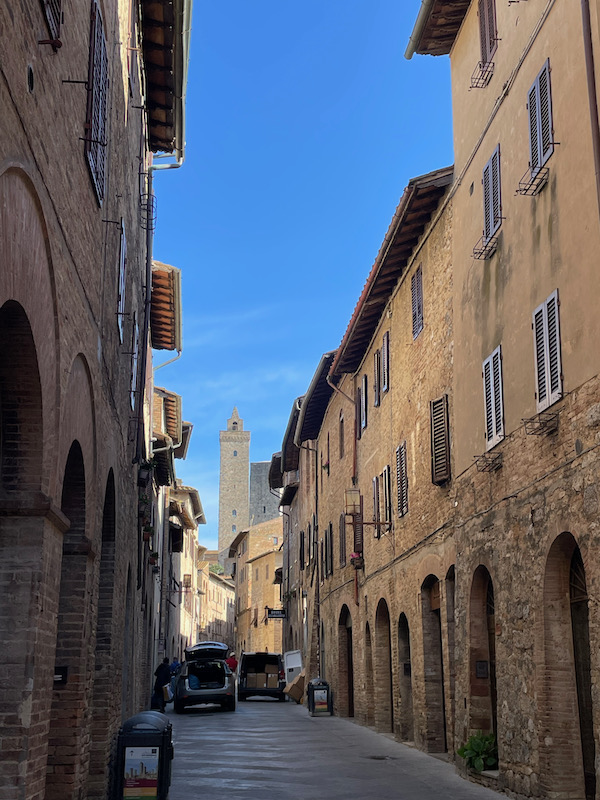
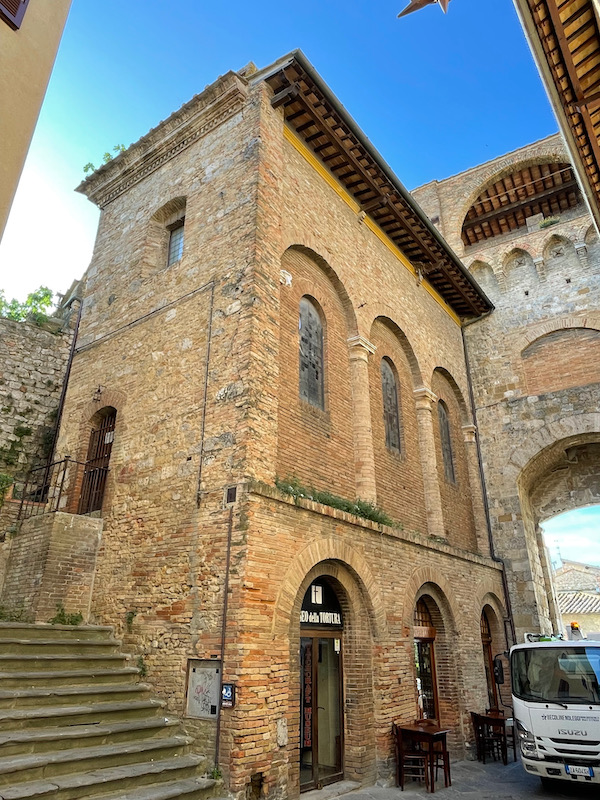
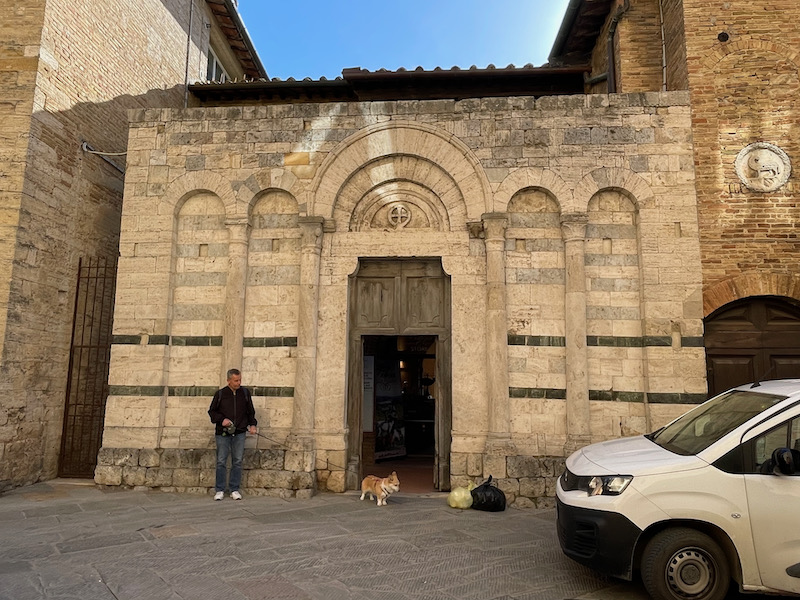
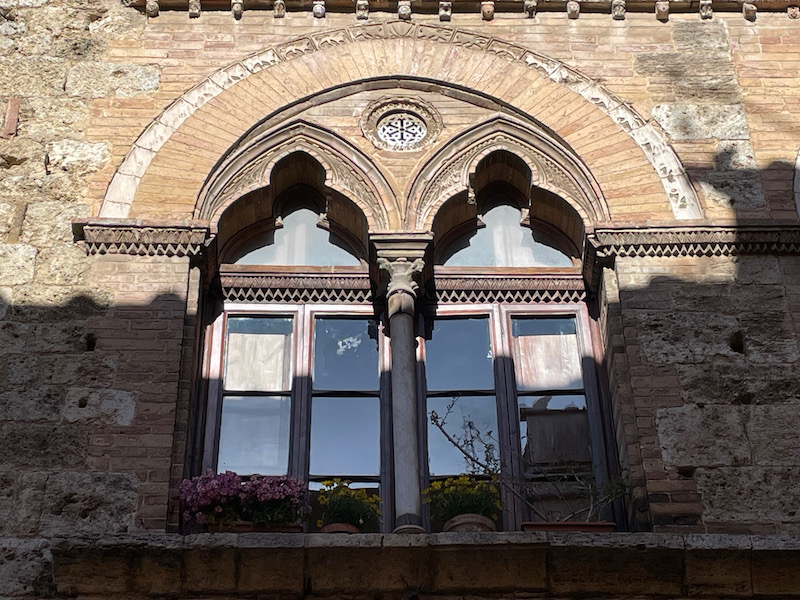
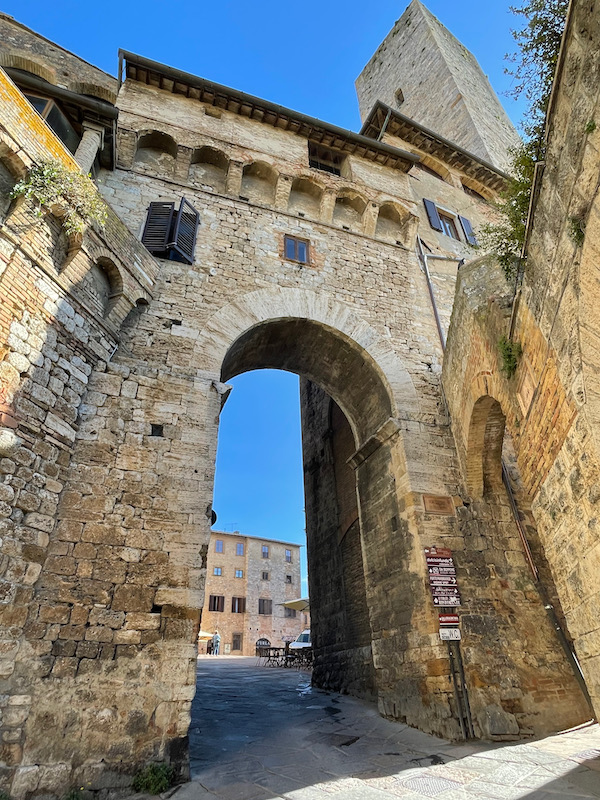
Piazza della Cisterna is the main square of the town, surrounded by medieval houses of different dates, fine examples of Romanesque and Gothic palazzos. At the center of the piazza stands a well which was the main source of water for the town's residents, dating from 1346.
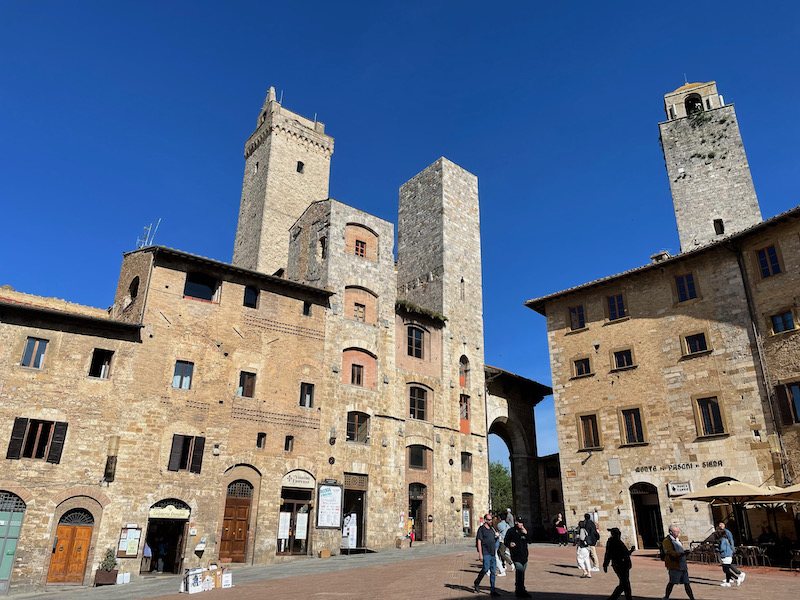
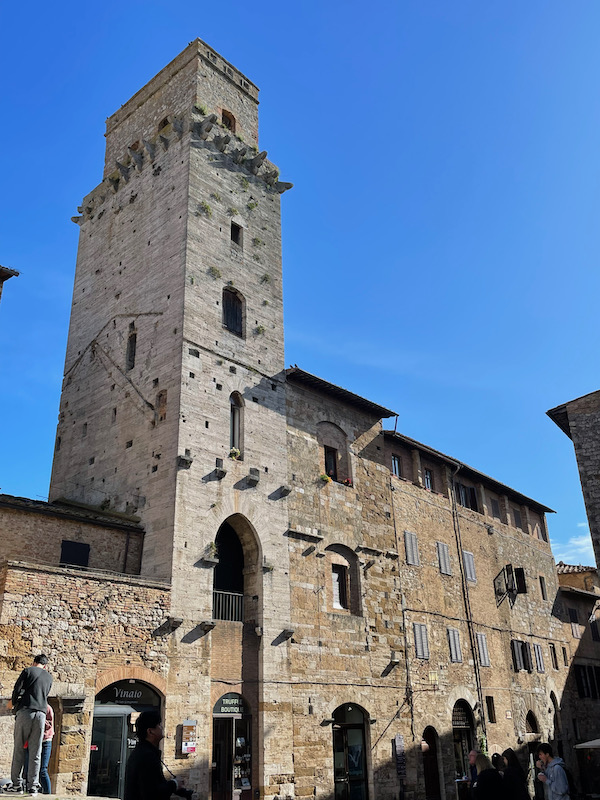
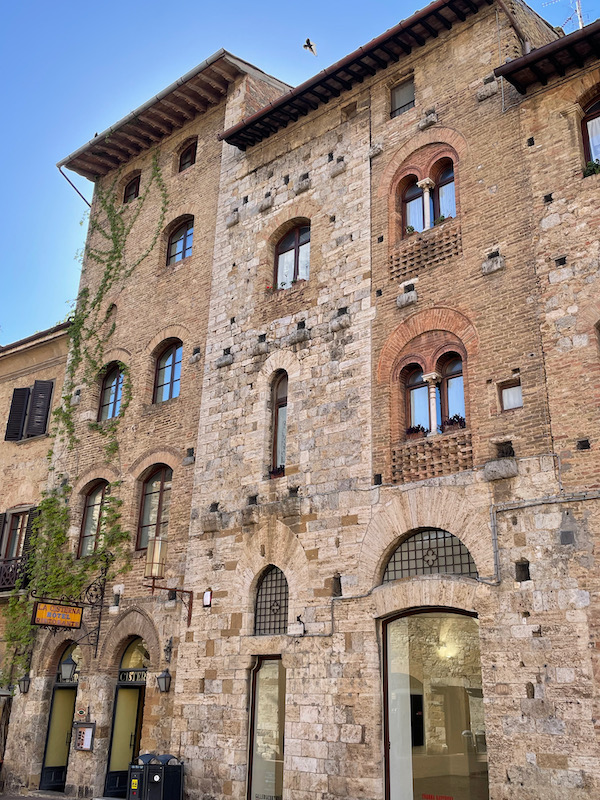
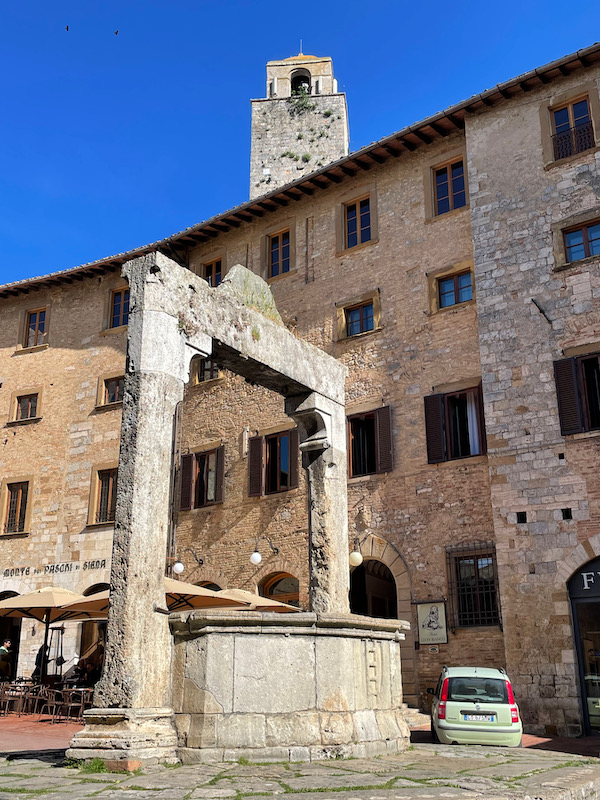
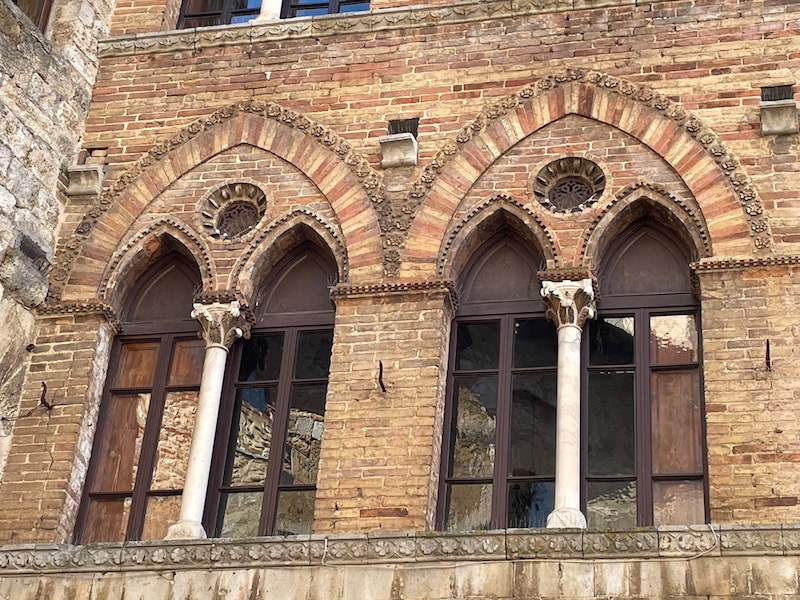
Some of the alleys are quite narrow and have passageways underneath houses. Here we got a nice shot of one of the towers.
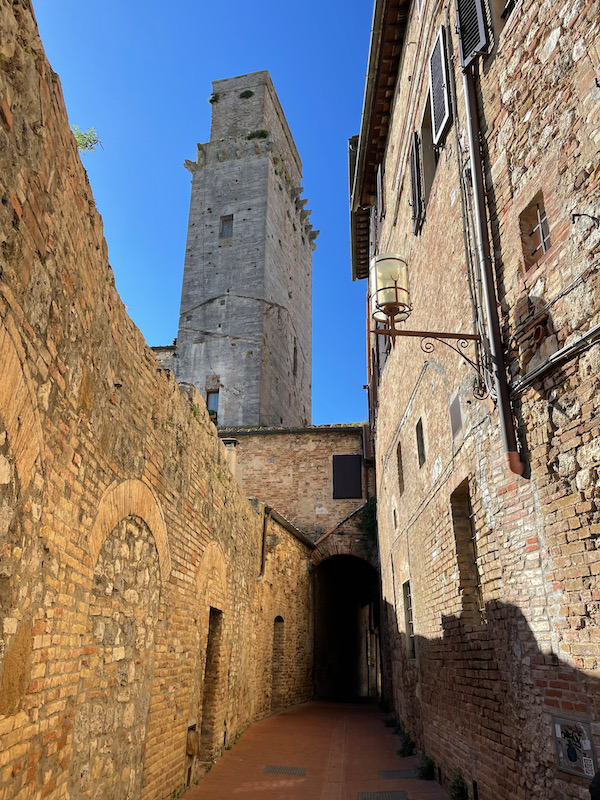
There are a couple key buildings in the Piazza del Duomo, including a church (up the steps) and the Palazzo Comunale (to the left with the tower). The name of the square would seem to imply that this church was at one time a cathedral, but although it was perhaps planned, this was never the case. The Palazzo Comunale dates from the late 13th century, and was built on the ruins of an existing building between 1289 and 1298. Further expanded in the 14th century, the facade is characterized by arched windows, with the lower half of the frontage built with stone, and the upper part in brick.
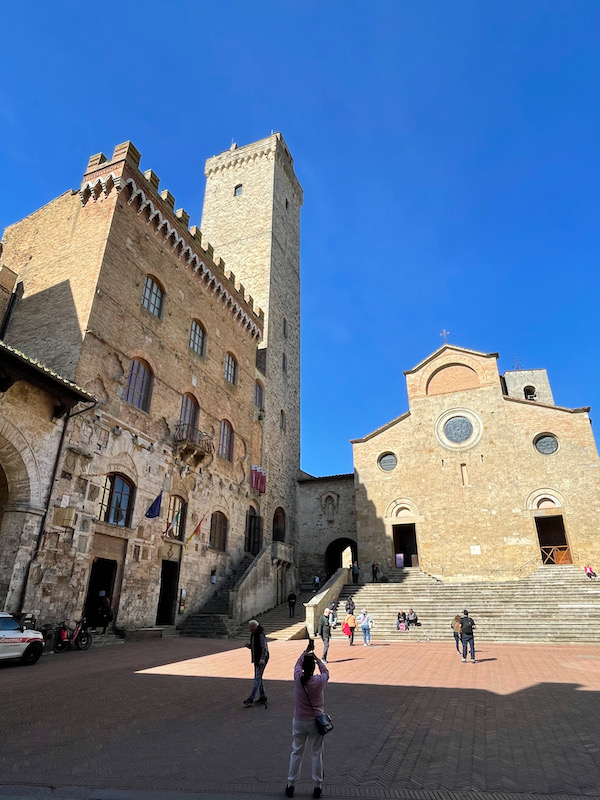
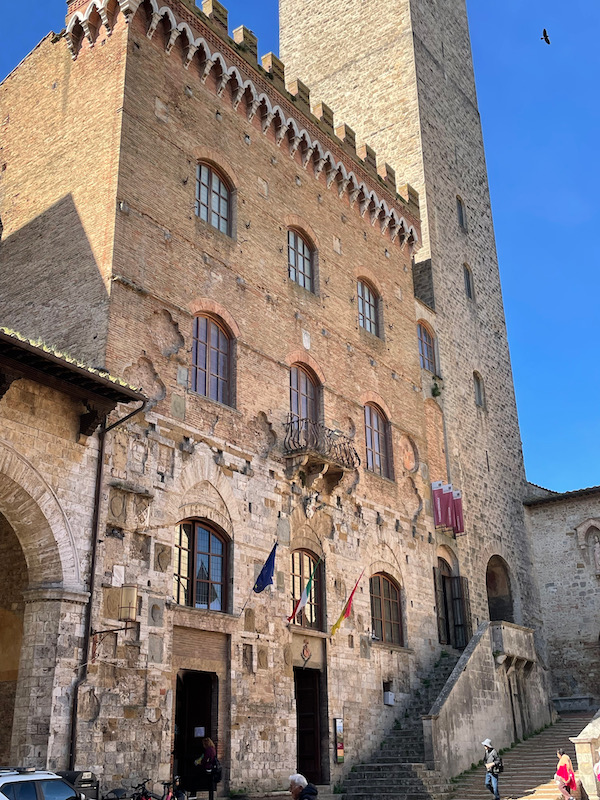
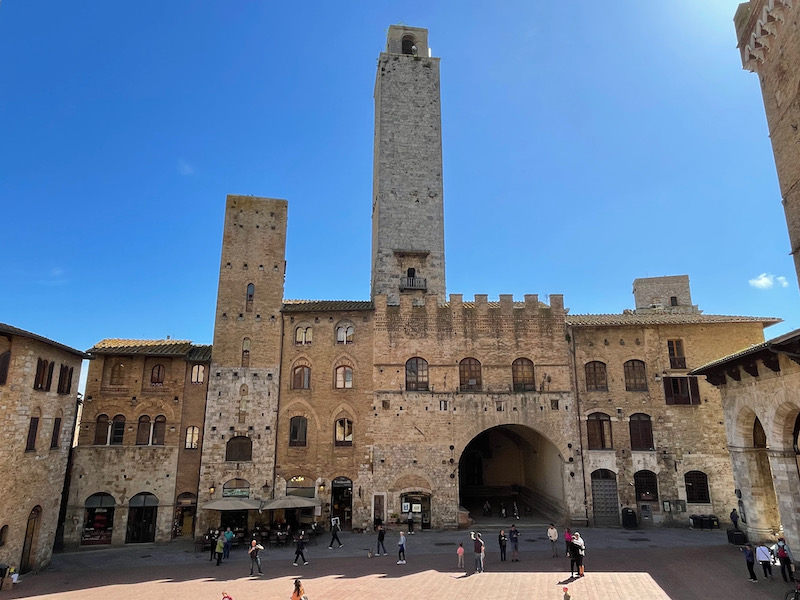
Also on the square is the Torre Chigi, the shortest (but some say most beautiful) of the towers, built in 1280. On the 1st floor, you can see a a doorway (with a brown door that is closed). This was the entry in medieval times - you would have a set of stairs that you would go up and enter into the building, and then withdraw the stairs during the night, keeping everyone safe. On the 2nd floor, the window is a narrow slit with an elongated arch resting on brackets. The tower is flanked by medieval buildings: the one on the left has gracefully crafted mullioned windows.
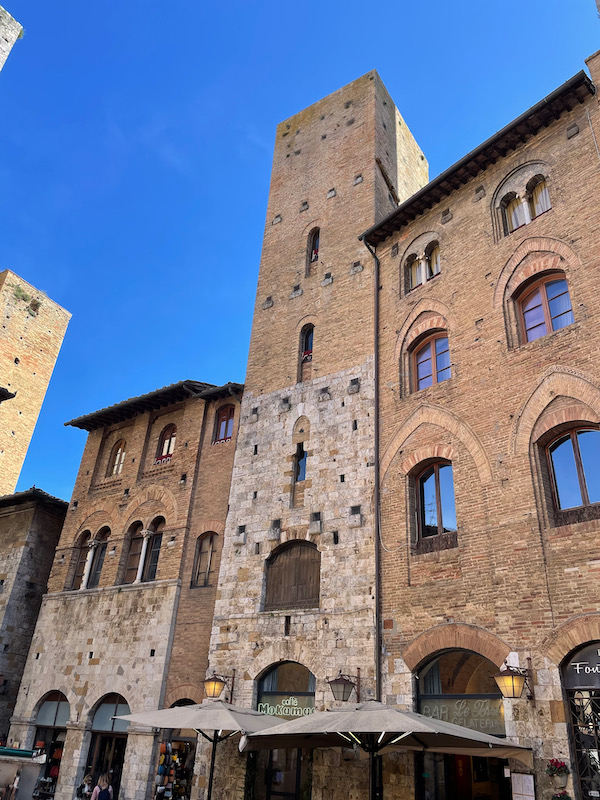
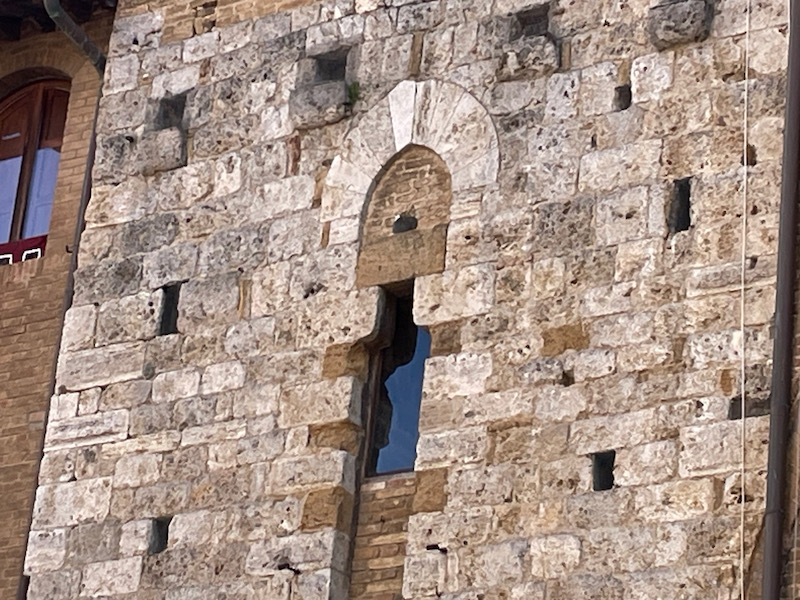
The church that has a very plain façade is quite colorful inside. Called the Collegiata di Santa Maria Assunta, it dates from 1148. In the 13th, 14th, and 15th centuries, the frescos and sculptures were added. The Romanesque architectural details of the church's interior are emphasized by the decorative use of color, with the nave arcades alternating black and white marble, creating stripes. The vault compartments are all painted with lapis lazuli dotted with gold stars, and the vaulting ribs are emphasized with bands of geometric decoration predominantly in red, white and gold.
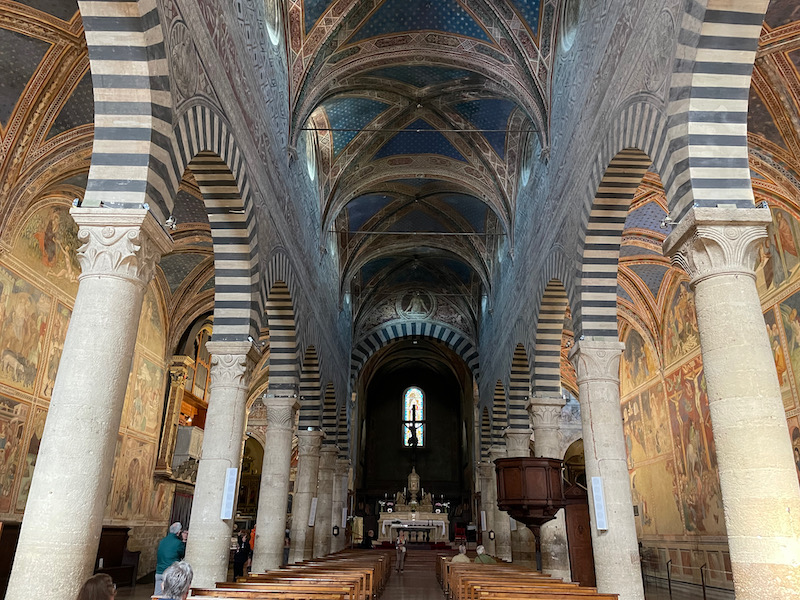
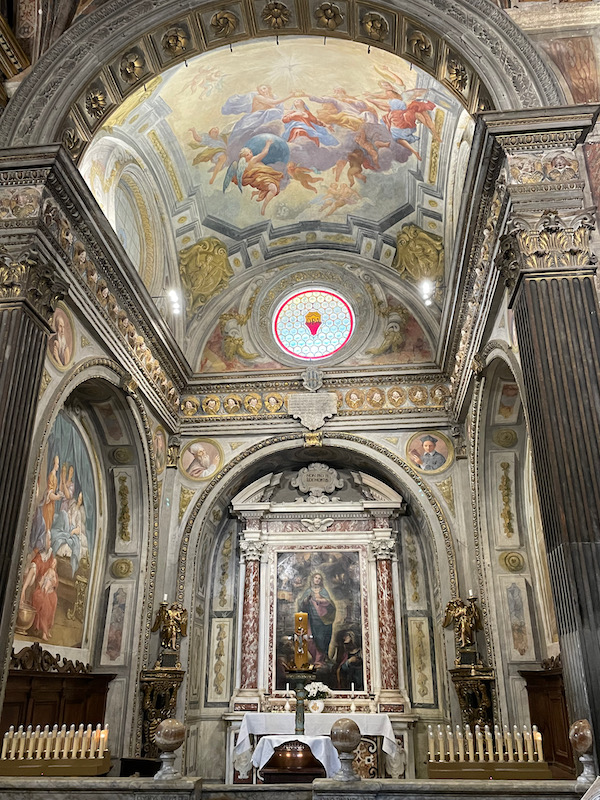
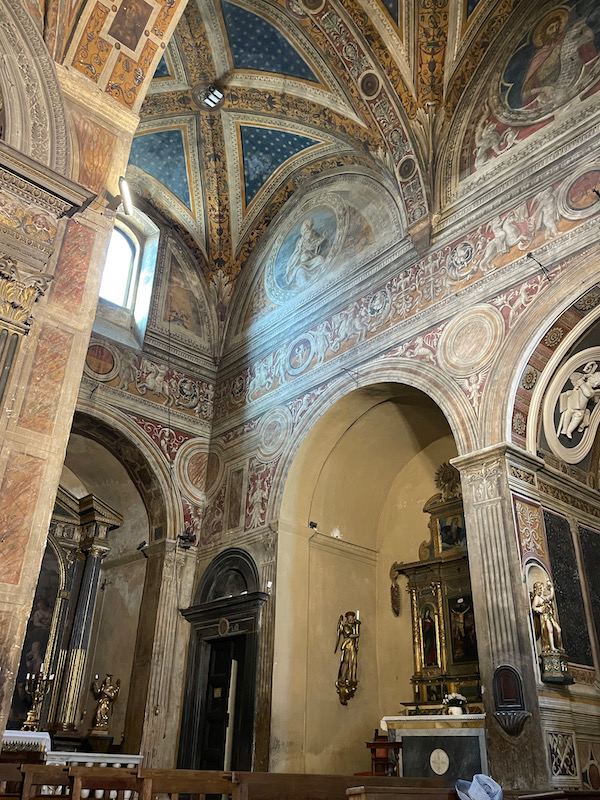
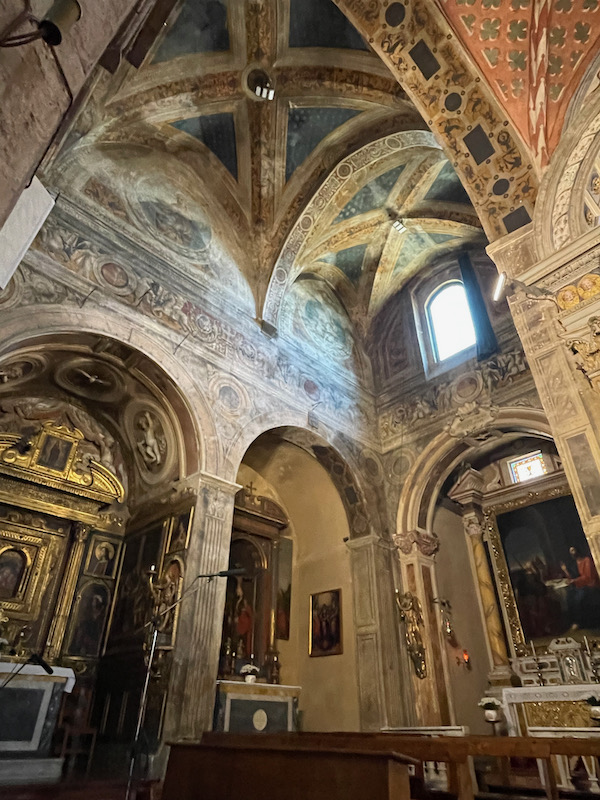
On the left and right walls, you can see "framed" frescoes in 3 rows (or registers).
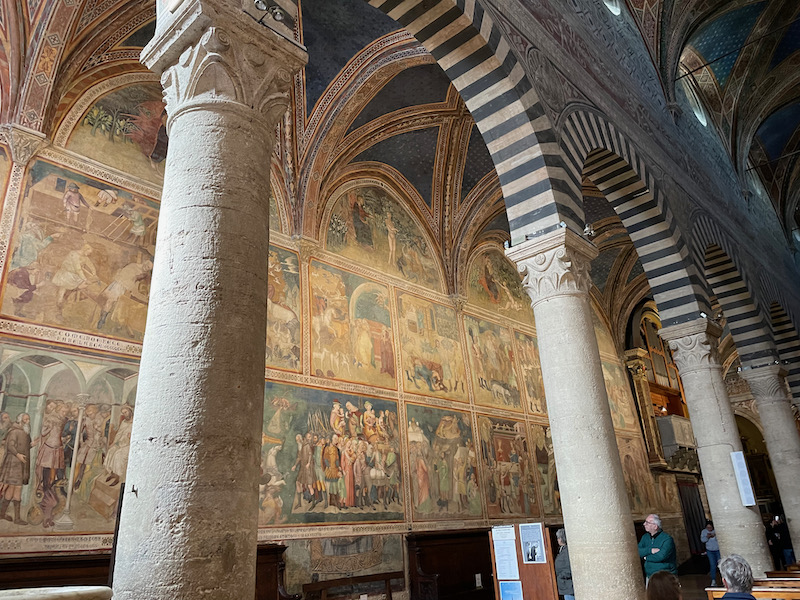
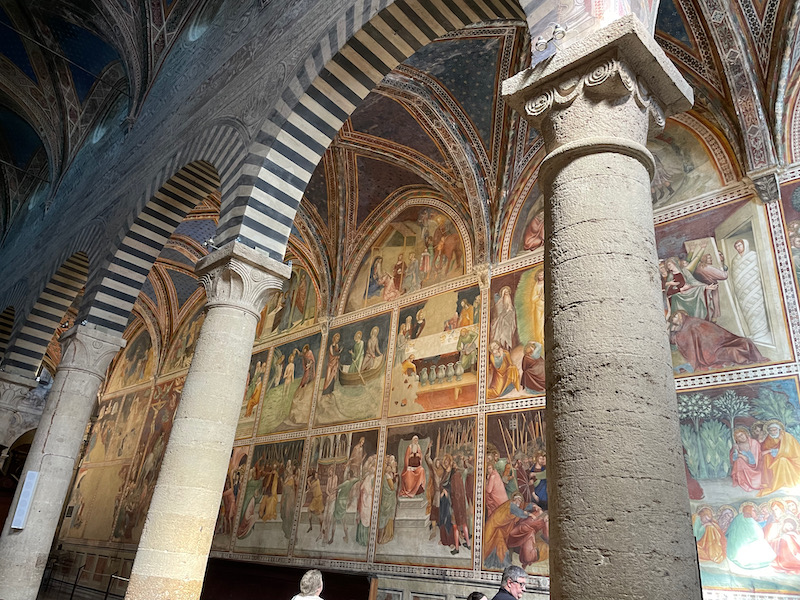
The left wall has scenes from the Old Testament ... Within the upper register (in the lunettes) are the creation of the Earth, then the creation of Adam, Adam naming the animals, and the creation of Eve.
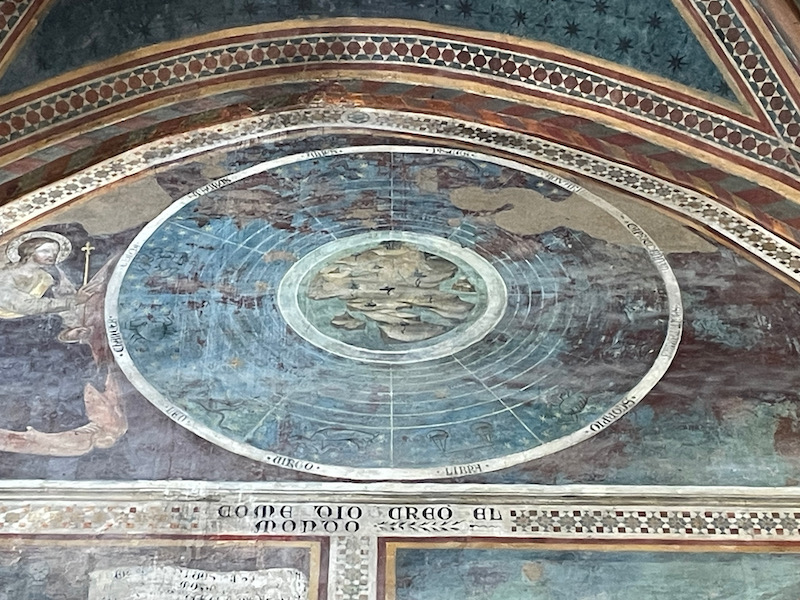
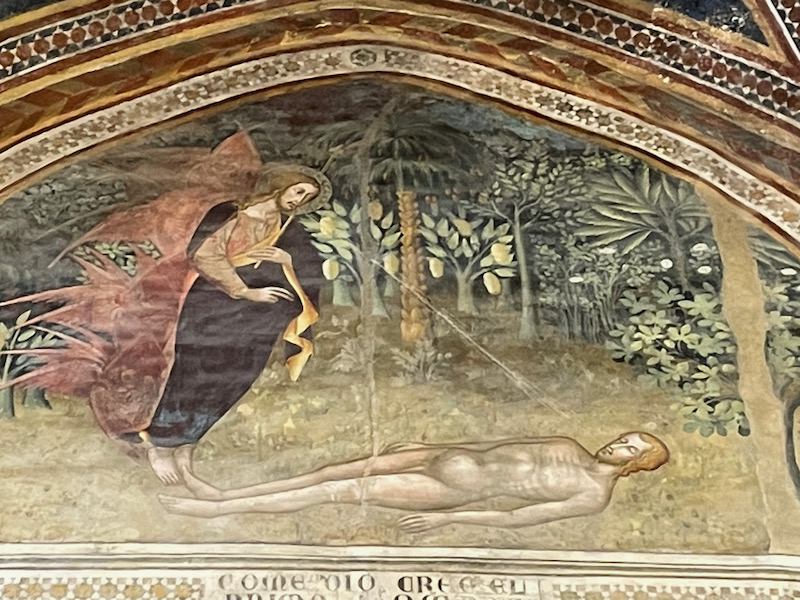
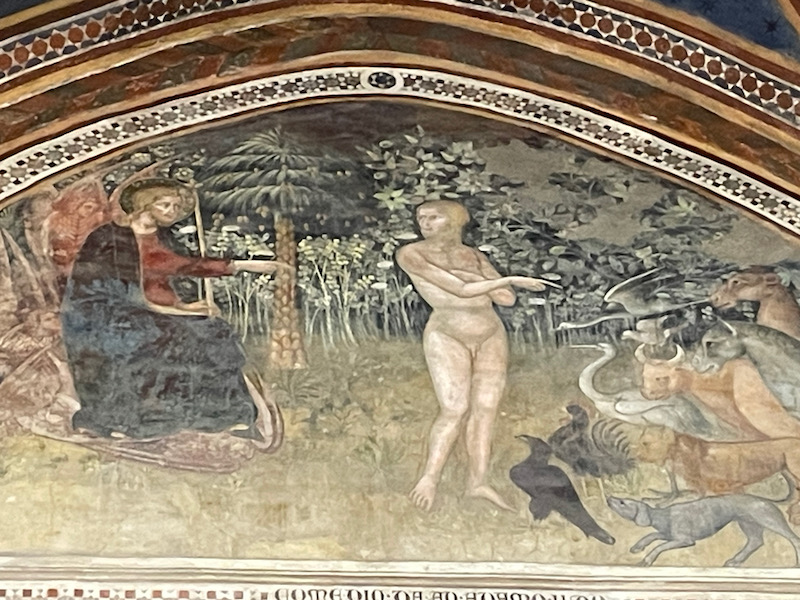
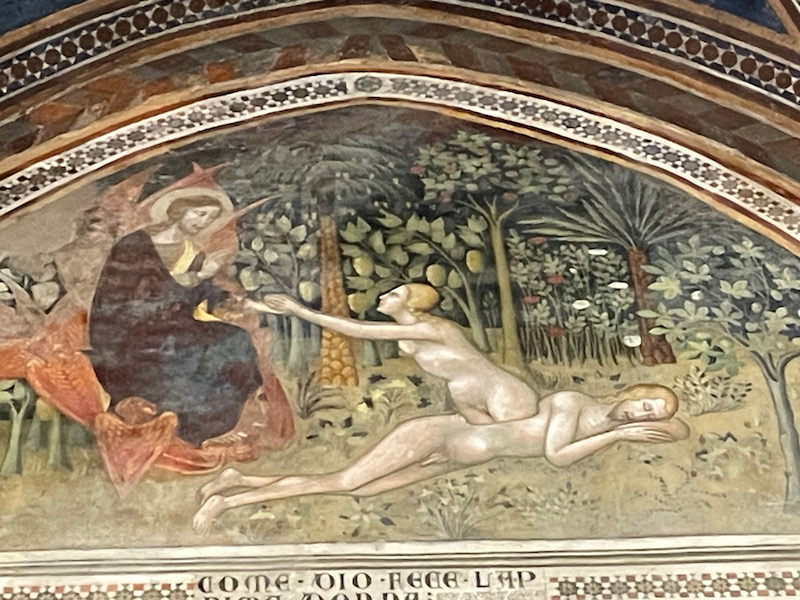
Another scene from the Old Testament, this one showing the men and herds of Job being killed.

The right wall has scenes from the New Testament ... here I show the Kiss of Judas and The Last Supper.
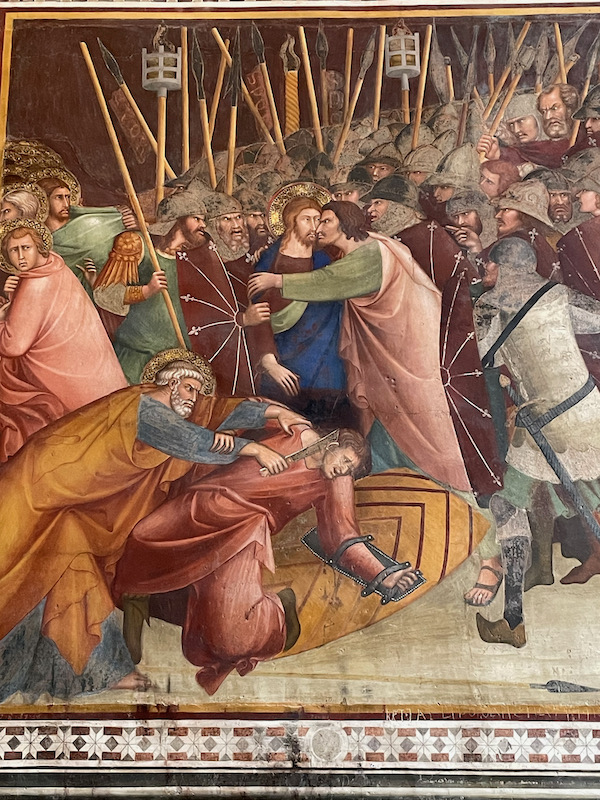
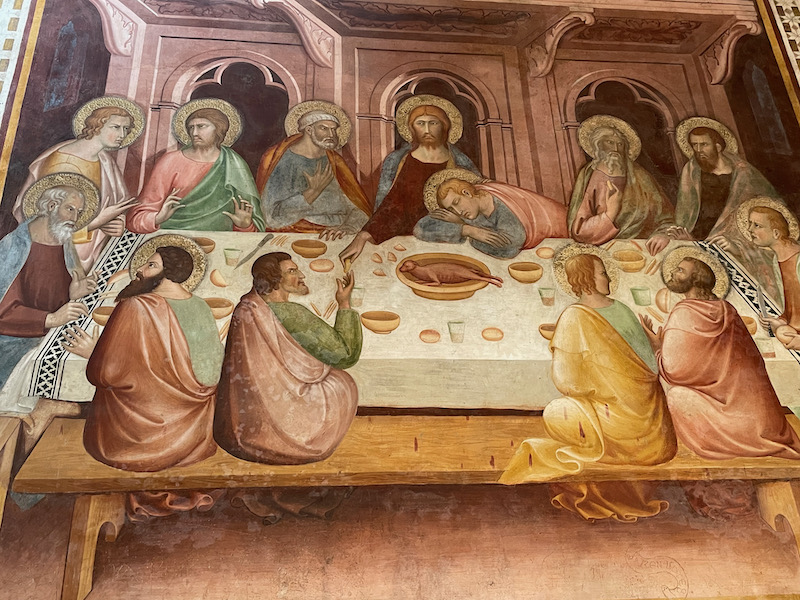
Near the back of the church are scenes that were completed in 1393 showing the Last Judgement, this wall representing Hell along with depictions of the torments suffered by those who commit one of the 7 deadly sins.
